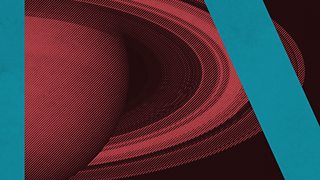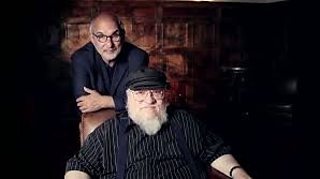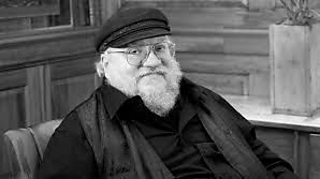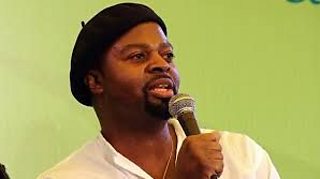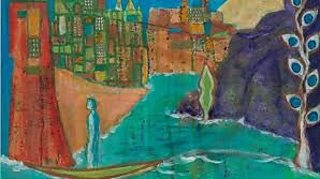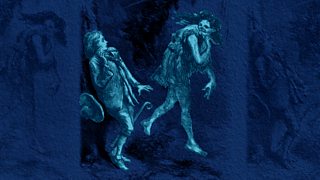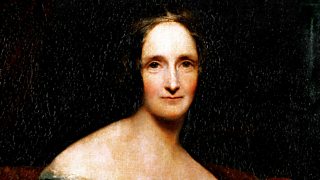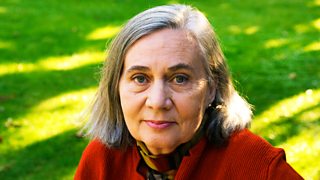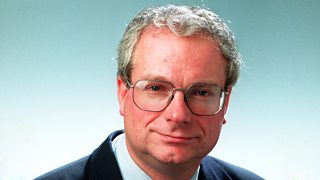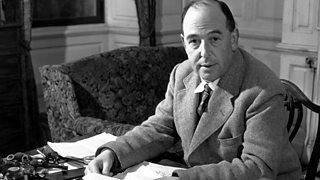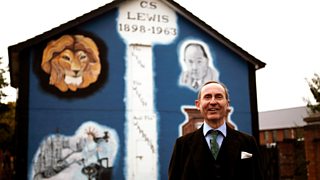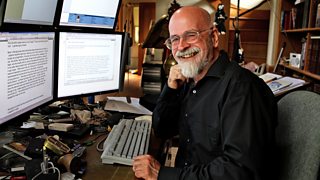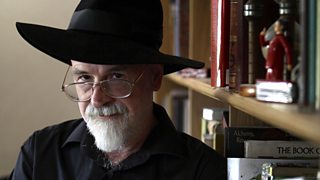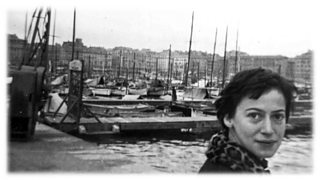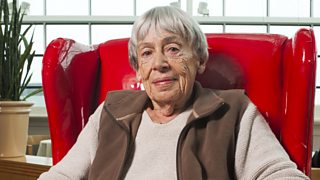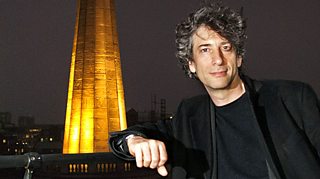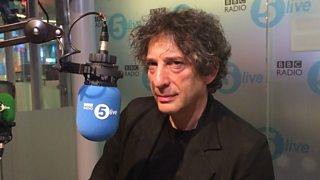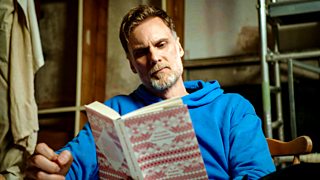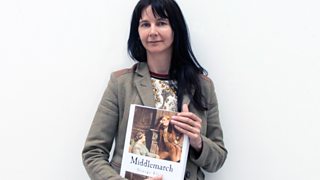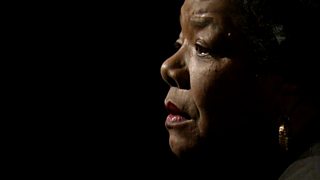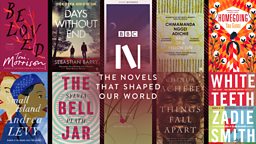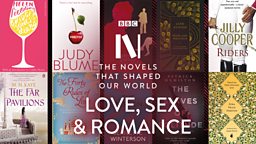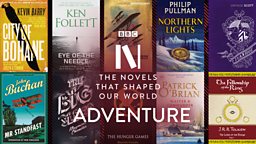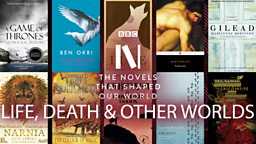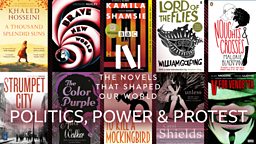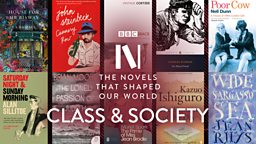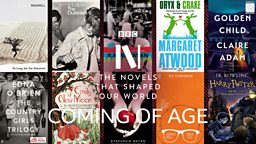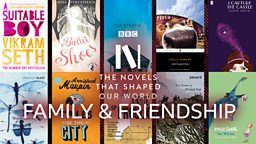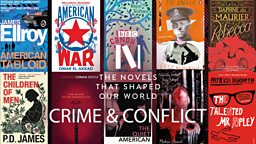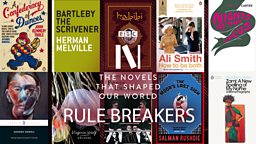The view from elsewhere: Ten classic stories of other worlds
C.S Lewis's Narnia, Ursula K Leguin's Earthsea and Terry Pratchett's Discworld are just some of the other-worldly settings for these ten novels that tackle loss, birth and rebirth, and the struggle to live in alternative universes or imagined futures.
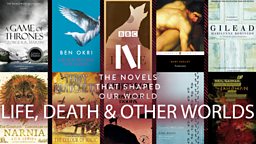
The panel have chosen these novels on the theme of Life, Death and Other Worlds:
A Game of Thrones by George R. R. Martin; Astonishing the Gods by Ben Okri; Dune by Frank Herbert; Frankenstein by Mary Shelley; Gilead by Marilynne Robinson; The Chronicles of Narnia by C. S. Lewis; The Discworld Series by Terry Pratchett; The Earthsea Trilogy by Ursula K. Le Guin; The Road by Cormac McCarthy; The Sandman Series by Neil Gaiman.
The Novels Survey
-
![]()
Help us complete the largest ever survey of English language novels and get personalised book recommendations.

A Game of Thrones by George R. R. Martin, 1996-
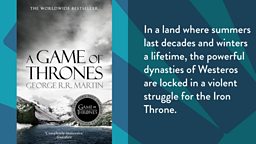
A Game of Thrones is the first in a fantasy series by George R. R. Martin. It depicts a world of Kings, Queens, direwolves, dragons, and the struggle for power and honour between and within families. With the success of the resulting TV series, A Game of Thrones has become a household name and the book is perfect for those who love to fall into a fantasy world with many characters, storylines and settings.
Book Club Questions
1. How is the idea of ‘masculinity’ challenged in the novel, if at all?
2. How does the author use place and environment to add to the story?
3. Did you feel you could categorise the characters into ‘good’ or ‘bad’?
-
![]()
WATCH: George RR Martin on Lord of the Rings, and the history of Scottish and English Kings
The author talks to Alan Yentob for imagine… other topics include Italy, Machiavelli, and why a good person doesn't always make a good King.
-
![]()
LISTEN: Front Row - George RR Martin: 'They run the show, I do the books'
Kirsty Lang talks to George RR Martin, whose epic series of fantasy novels A Song Of Ice And Fire formed the basis for the TV hit Game Of Thrones.
Game of Thrones is fantasy's equivalent of a perfect cocktail. Elements drawn from the Hundred Years' War and the Italian Renaissance, from ChrΓ©tien de Troyes and Icelandic epic, fuse to seamless effect.Historian Tom Holland
Get Involved

Astonishing the Gods by Ben Okri, 1995
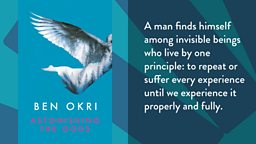
From the pen of Nigerian Booker Prize-winning novelist Ben Okri, Astonishing the Gods follows a young man pondering invisibility. He finds himself entering a dreamlike world of invisible beings where he’s tested to explore the meaning of life and self-understanding. Reminiscent of Greek myths, the setting forms and changes throughout the story, with the main character in discussion with wise and challenging beings. Teetering between dystopia and utopia, this world is based on the principle that the result is not as important as the journey, the process and the experience.
Book Club Questions
1. The book explores the principle that we must repeat or suffer every experience until we experience it properly and fully for the first time. Does that resonate with you?
2. How does the novel challenge ideas of imagery, visibility and invisibility? How do these ideas relate to our own lives?
3. Do you think the book is set in a utopia?
-
![]()
PODCAST: Ben Okri on the freedom of Africa's storytellers to explore their continent
HARDtalk's Stephen Sackur talks to Ben Okri, asking how free are Africa's storytellers to explore the richness and diversity of their continent?
-
![]()
WATCH: Ben Okri on 'fairy tales laced with acid'
Ben Okri talks about the inspiration behind his 2017 book The Magic Lamp, co-written with illustrator Rosemary Clunie.
The Rime of the Ancient Mariner had a formative effect on me. I think it's one of those works that if you encounter it very early you're doubly enchanted by the beauty of the language and the strangeness of the vision. It stays with you.Ben Okri
Get Involved

Dune by Frank Herbert, 1965
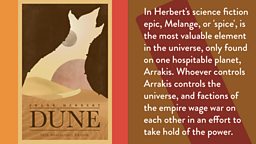
Arguably the best-selling science fiction novel of all time, Dune is a genre-defining epic set in the far future, amidst a warring society of interstellar civilisations. The narrative focusses on Paul Atreides, son of Duke Atreides, and the stewardship of Arrakis, an inhospitable planet where giant sandworms guard the ‘melange’ – the spice resource vital to the socio-economic system. Encompassing politics and power, religion, familial bonds, tribal warfare and much beyond, the scale and reach of Dune and the wider universe Herbert creates has rarely, if ever, been equalled.
Book Club Questions
1. Does the novel remind of you of any power struggles relating to our world?
2. Discuss the significance of religious belief in the novel.
3. Dune has been described as much more than science-fiction – do you agree? How does the novel relate to other genres and story types?
-
![]()
LISTEN: 100 Books You Must Read Before You Die: Dune
Cherry Mosteshar, author and founder of The Oxford Editors, adds Dune to 100 Books You Must Read Before You Die.
-
![]()
DOWNLOAD: Charlotte Rampling chooses Frank Herbert's Dune
Actress Charlotte Rampling's book of choice, on Desert Island Discs in 1976, was Dune.
Herbert had spent do much time thinking out his world... making it real and doing the details.Ursula K. Le Guin
Get Involved

Frankenstein by Mary Shelley, 1818
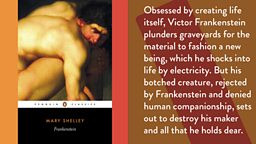
Shelley’s classic Gothic novel charts the story of Victor Frankenstein, a young scientist whose efforts to discover the secrets of life by creating a creature out of old body parts has disastrous consequences. Raising questions of life and death, as well as good and evil, the popularity of the novel and its consequent adaptations have immortalised Frankenstein’s Monster as one of the ultimate characters in fiction.
Book Club Questions
1. Victor Frankenstein’s ambition leads him to create the Monster. Given the subsequent events of the novel, do you think it was wrong for him to want to have this knowledge about the origins of life?
2. What makes Frankenstein’s creation a monster rather than a human being? Does the section of the novel narrated by the Monster change your feelings towards it?
3. If you were in Frankenstein’s situation, what would you do when the Monster asks him to create a bride?
-
![]()
LONG LISTEN: Frankenstein unabridged - Classic Stories on Βι¶ΉΤΌΕΔ Sounds
Mary Shelley’s gothic masterpiece about a young scientist’s quest to create new life, read in 24 parts.
-
![]()
READ: Freak events on Lake Geneva that gave birth to science fiction
Mary Shelley could never have foreseen how her story would shape popular culture for centuries to come.
It was the offspring of happy days, when death and grief were but words.Mary Shelley on Frankenstein
Get Involved

Gilead by Marilynne Robinson, 2004
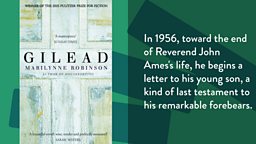
Written in the form of a letter from the dying Reverend John Ames to his young son, Gilead explores the friendships and family relationships of three generations of the Ames family. Through Ames’ stream-of-consciousness contemplation of his personal history and community life in his small town in Indiana, Marilynne Robinson draws out the beauty and meaning of everyday life.
Book Club Questions
1. How would you describe the community of Gilead? Did anything surprise you?
2. How does the book portray different relationships between fathers and sons?
3. Is this a story of hope? If so, for whom?
-
![]()
LISTEN: Bookclub - American writer Marilynne Robinson and Gilead
Marilynne Robinson reveals why there was a gap of twenty-four years before she was able to write her second book, Gilead, which won the 2005 Pulitzer Prize.
-
![]()
LISTEN: A Good Read - Jacqui Dankworth and Chris Smith
Jazz singer Jacqui Dankworth and former Culture Secretary Chris Smith discuss books including Gilead by Marilynne Robinson. From 2008.
The terrible turn this part of the populist culture that calls itself Christian has taken is appalling. It is terribly destructive, too. It is a failure of the Christian argument.Marilynne Robinson in the Guardian, 2018
Get Involved

The Chronicles of Narnia by C. S. Lewis, 1950-56

One of the most-loved fantasy series, the seven books of The Chronicles of Narnia follow the adventures of a group of children in the land of Narnia, discovered through the back of a wardrobe. Full of animals and mythological creatures, the series has delighted children and adults alike for decades.
Book Club Questions
1. Do you see a parallel between the facts narrated and the events of the Second World War?
2. Do you think the characters fill traditional gender roles? If so, is this reflective of the time in which the series was written?
3. Many readers have seen symbolic references to Christianity in the series. Can you spot any and what does this interpretation add to the story?
-
![]()
LISTEN: CS Lewis's stepson remembers the man who created Narnia's magical world
The first book in the Chronicles of Narnia series was published in the Autumn of 1950. Witness History talks to the author's stepson Douglas Gresham.
-
![]()
WATCH: Narnia’s Lost Poet
AN Wilson visits the Eagle & Child pub, the Oxford drinking den frequented by the Inklings.
Get Involved

The Discworld Series by Terry Pratchett, 1983-2015

The iconic fantasy series set in a flat, circular world which sits on the back of four elephants, which in turn stand on the back of a giant star turtle. In a parallel time and place to our own, the 41 novels that make up the series use a range of themes, from fantasy to real-world issues, in various story arcs to take you on a journey to a weird and wonderful universe.
Book Club Questions
1. How does the author celebrate and subvert classic fantasy adventure stories like those of Tolkien etc.?
2. What is your opinion of Rincewind the Wizard and what purpose do you think he serves in the overall narrative?
3. Which characters/places most intrigued you in the series? Which would you most like to know more about?
-
![]()
READ: Everything you need to know about Terry Pratchett
Stephen Briggs, who collaborated with Pratchett and counted him as a friend, recalls an extraordinary man.
-
![]()
LISTEN: Terry Pratchett on his first Discworld novel
Terry Pratchett reads from The Colour of Magic, the first book in the Discworld series.
Get Involved

The Earthsea Cycle by Ursula K. Le Guin, 1968-1972
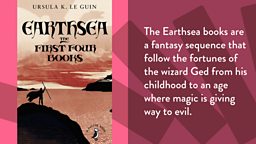
Ursula K. Le Guin’s classic fantasy saga, The Earthsea Cycle, is a subtle and nuanced masterpiece of the genre. The original trilogy explores the lives of the inhabitants of the Earthsea archipelago - a world of magic, politics, power and philosophy. Earthsea is a vast and complex creation of astonishing scope and breadth. From isolated rural communities to Roke, the centre of magic and power, to strange new lands and cultures, the books deal with the nature of power, religion, love and humanity.
Book Club Questions
1. Discuss the nature of power in a world of magic – how does this compare to our world?
2. What do you think of the character of Ogion? What does he want, and what does he represent in the books?
3. What are the themes that run throughout the books, and how do the books differ from one another?
-
![]()
WATCH: The Worlds of Ursula K Le Guin
Documentary that explores the remarkable life and legacy of the late feminist author best known for groundbreaking science fiction and fantasy works.
-
![]()
LISTEN: Ursula Le Guin at 85
Naomi Alderman talks to novelist Ursula Le Guin and hears from fans including Neil Gaiman.
Get Involved

The Road by Cormac McCarthy, 2006
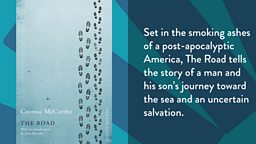
McCarthy’s sparse dystopian classic is a bleak and tender examination of the human condition and what it is to be alive. The Road, in its sharp and stuttering prose, charts the progress of ‘the man’ and his son, as they wander inexorably on through a post-apocalyptic America. Hugely influential and original, this seminal novel has paved the way for a new generation of climate-dystopian literature.
Book Club Questions
1. Discuss the role that ‘the road’ plays in the novel.
2. What do you think drives the man to keep going?
3. How does the language and McCarthy’s prose relate to the world which he has created?
-
![]()
DOWNLOAD: The Road on Radio 4's Books and Authors podcast
Singer-songwriter Nerina Pallot and computer games pioneer Peter Molyneux join Harriett Gilbert to discuss their favourite books, including The Road by Cormac McCarthy.
Get Involved

The Sandman Series by Neil Gaiman, 1989-96
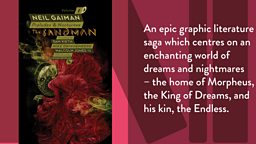
The Sandman Series follows the adventure of Dreams of the Endless, the ruler of the dreamworld, as he oversees and shapes all creatures’ dreams. Filled with references to ancient mythology, pop culture, and both traditional and modern literature, the books combine historical events and imaginary worlds, fictional characters, both original and from other stories, and iconic personalities (including William Shakespeare!).
Book Club Questions
1. Why do you think the author has made the choice to mix high-brow and pop culture references in Sandman, and which ones can you spot?
2. How is the representation of death in Sandman different from others that you can think of, and what message is the author trying to give?
3. Why do you think The Sandman was one of the first comic book series to receive mainstream literary recognition?
-
![]()
LISTEN: Neil Gaiman on 'the thing lurking just out of sight in the shadows'
Neil Gaiman talks to Mariella Frostrup on Open Book about his works for children and adults.
-
![]()
LISTEN: Neil Gaiman would rather see no Sandman movie than a bad one
Neil Gaiman says his famous graphic novel Sandman would probably be best made for TV.
Get Involved

Book club questions on Life, Death & Other Worlds
To round off our 10 novels in the Adventure theme, here are five stimulating questions to ponder. And below, to continue exploring, try our further reading suggestions.
1. Why do we read books set in other worlds? Do you think that reading these books is a way of reflecting on our own circumstances?
2. Life and death are key themes in literature. Do you think that reading or writing about these themes is a way of helping people to understand their own mortality?
3. Some of the most well-known fantasy, sci-fi and dystopian novels are part of a series. Why do you think these stories are often written over the course of many books?
4. How and why do you think real-world events and facts are used in novels set in other worlds?
More Novels exploring Life, Death and Other Worlds
Little, Big by John Crowley
A Thousand Ships by Natalie Haynes
Good Omens by Terry Pratchett and Neil Gaiman
Dracula by Bram Stoker
The Picture of Dorian Gray by Oscar Wilde

The Novels Survey
-
![]()
Help us complete the largest ever survey of English language novels and get personalised book recommendations.

- Produced with support from
- Most of the books on the Novels 100 list are available in various formats from the .

- Novels That Shaped Our World is run in partnership with and is supported by .
Get Involved
-
![]()
Share the book you love on Twitter
-
![]()
Tell us about the novels you love on Facebook
-
![]()
Show us a book (or books) you love using the hashtag #mybooklife
Brilliant books content on Βι¶ΉΤΌΕΔ iPlayer
-
![]()
Novels That Shaped Our World
Looking at class in all its shapes and sizes, from all sides of the class divide, in the UK, USA and India
-
![]()
Everything Is Connected - George Eliot's Life
Gillian Wearing's experimental film, made up of a diverse cast of people, celebrate the legacy of the Victorian author
-
![]()
Face to Face: Maya Angelou
In this classic interview from 1994, Jeremy Isaacs talks to Maya Angelou about her life, her writing and her hopes for the future
